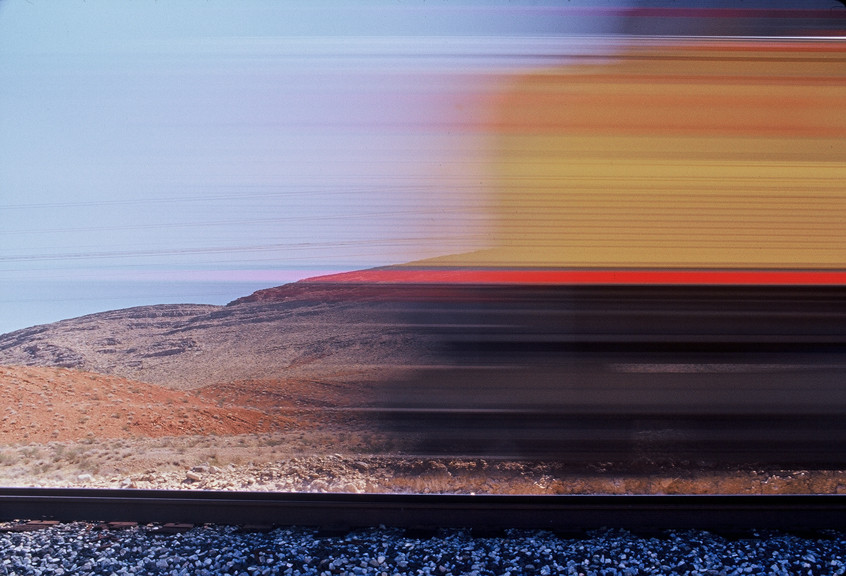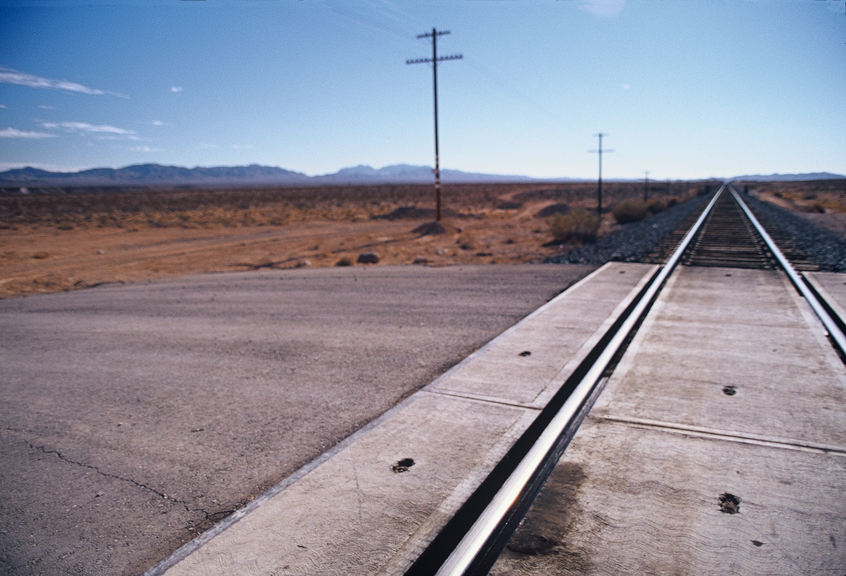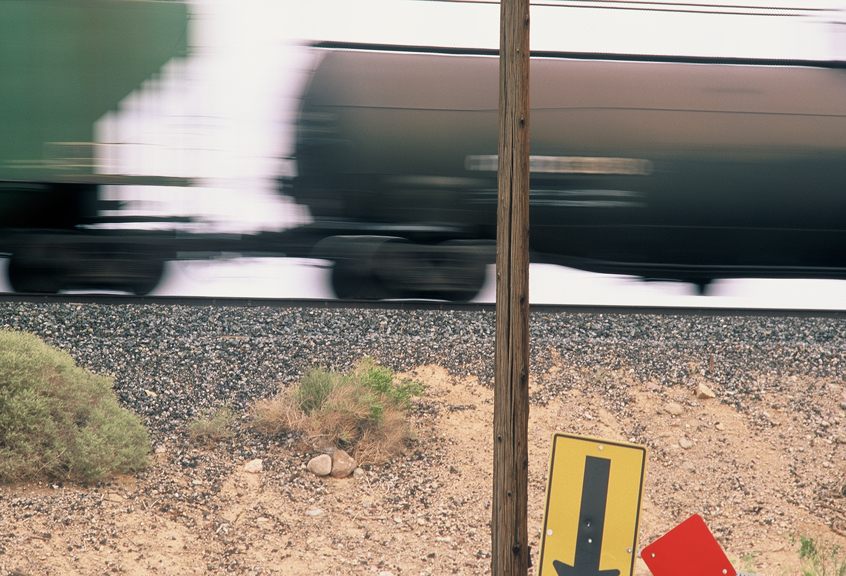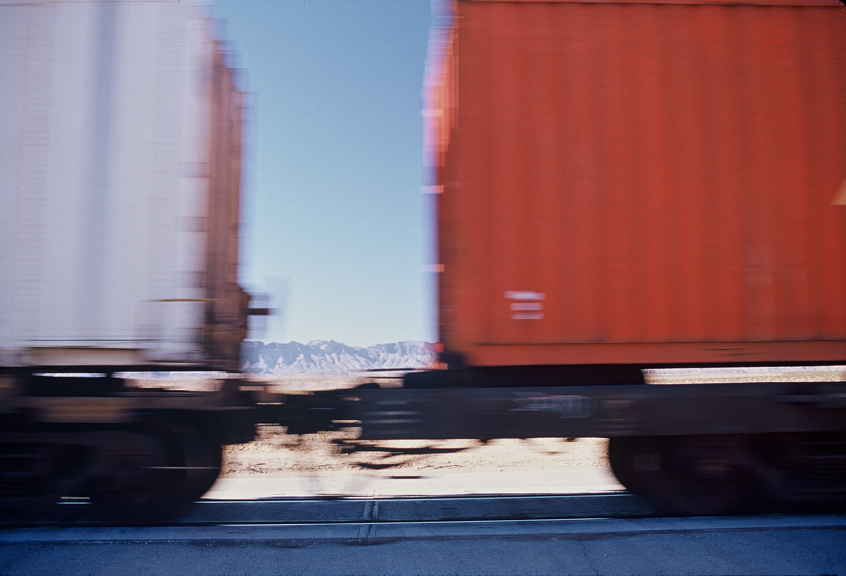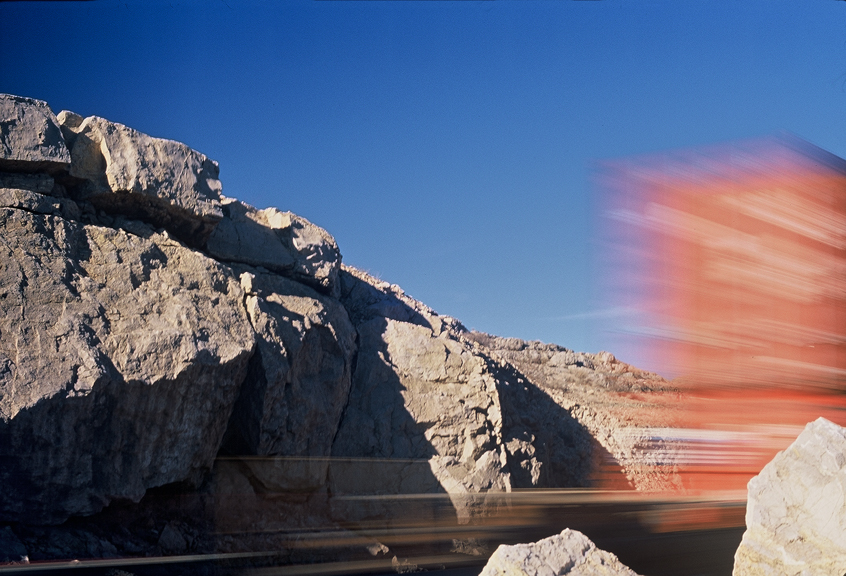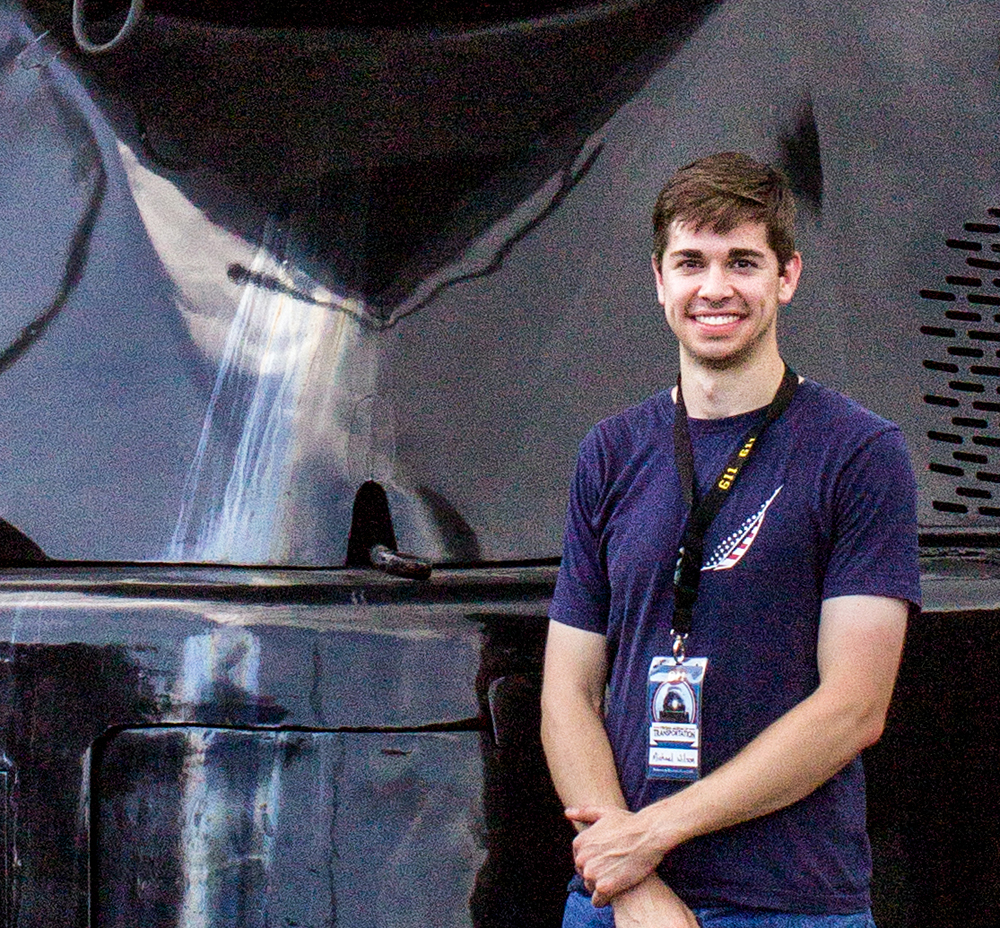The Union Pacific Railroad in southern Nevada circa the late 1990s/early 2000s.
How did you get interested in photography?
My mother taught art all of her working life and was a great photographer in her own right. I received my first camera on my 9th birthday and immediately started making pictures of family and neighborhood friends. I still have the camera to this day, a Kodak Duaflex IV that required 620 film [which is the same size as 120 film]. I remember finding a mail-order lab that would develop my black-and-white film and send back not only the developed photographs, but also a fresh new roll of film. I loved getting that new roll of film.
What resources did you use to learn photography?
I am self-taught. The only formal resource that I used in learning photography was a darkroom class in how to develop black-and-white film. I put the camera down for many years after my early Kodak days. Then, years later, when I moved to Manhattan, I bought a Nikon and started going to major league baseball games, where I began photographing again.
What photographers have influenced or inspired you, particularly railroad photographers, but also others?
My influences are O. Winston Link and Richard Misrach.
What sparked your interest in railroads?
As a child growing up in a suburb of New York City, I became fascinated by trains … all kinds of trains, freight and commuter. Sitting on my school bus, we’d be stopped at a railroad crossing, and I’d watch with envy the commuters getting onto the train bound for the city. For some reason, I remember the feeling best on a wet fall morning. Usually the men were all wearing trench coats, and the women had on high heels. Oh, I’d so much rather be sitting on a train going into New York City, with the expectation it promised, than going to school. When I did get to go into New York with my mom, it was exciting to sit on that train. It sounded and smelled a particular way that you couldn’t find anywhere else. It was so grown-up. And it took so much less time than driving in a car. The train would slice through neighborhoods that you could never drive through.
What do you enjoy most about photographing railroads?
What I enjoy most about photographing railroads is the silence and being alone. Since my work photographing trains is in the high Nevada desert, my surroundings are usually breathtakingly beautiful. The wait for a train is filled with expectation, quiet expectation. Then, suddenly I hear the whistle, I hear the tracks creak, and then I know the train is coming. The wait was worth it, and the surprise is great fun.
Why the desert?
I love the desert. It’s surreal and so quiet and spooky, even in the light of day. The desert is so big that it makes me feel how small I really am. Since I’m now living in the Midwest, I’ve been traveling to the southern Nevada desert for many years … in every season.
As a female photographer, do you face challenges that male photographers do not?
I encounter no [gender-specific] challenges as a female railroad photographer. Before I found the Center for Railroad Photography & Art, I had no idea that there were tons of people all over the world who enjoy photographing trains as much as I do. When I first attended one of the Center’s Conversations about Photography conferences, I thought, “Wow, there are other people as crazy as I am!”
But it all really comes from years of observing before actually photographing — observing the juxtaposition of a colorful freight train with the color of the mountains, the color of the desert floor and the color of the sky that surrounds the train. It drew me in. Yes, [my work involves] trains, but it’s not just trains.
Do you think there are big differences between how men and women photograph trains, and if so, what are they?
I’m not sure about whether men and women photograph trains differently. I can only speak for myself when I say that the experience of being alone in a beautiful high desert, completely choosing to do this without constraints or an assignment is as good, if not better, than the final results that I see on my light table.
Many of your photographs incorporate large areas of sky. Why?
Yes, the sky is an important element in most, if not all, of my train photos. The sky, whether clear or with clouds, gives scope to where this freight train is. For purely thinking about color, the intense blue of the desert sky is a great backdrop for a multicolored freight train.
To describe in a nutshell how I feel about photographing trains: I have in my collection a black-and-white photo of a freight train, which I’ve titled “just me & you.”
Can you describe how you feel about photographing trains in the desert?
I go to a place in the desert where it is very empty of objects — no trees, no vegetation, no buildings, no cars, and no people. Just the desert, and in the distance a long snake of a multicolored freight train, which you can see for miles away. To photograph those trains, I wait by the tracks with my camera. Sometimes I know the trains’ schedules before I get there, but most of the time I don’t. Because it’s really great to be surprised. It’s so quiet. Only a bird’s call or sometimes a fly. And then, all of a sudden, I hear the tracks creak a little and actually whisper a little. Or did I? And then I look down the tracks in either direction. And then far, far in the distance I can see a faint white light and hear the faint sound of a train’s whistle. Or do I? And then a little while later I look again, and the light is a lot brighter. And then I know. And now I really see it and really hear it. And suddenly it’s upon me. Loud and mighty and dangerous and huge. And just as suddenly it’s gone. On it’s way to Utah or California. And it’s quiet again. And I’ve just seen time move.
SCOTT LOTHES, a frequent Trains contributor, is the executive director of the Center for Railroad Photography & Art in Madison, Wis.










